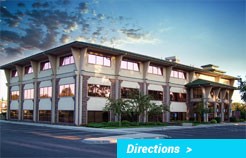Apnea or poor breathing is at the top of the list of present day health care problems. It is presently being treated with either a CPAP, which is a mask and machine used to force oxygen into the lungs, or with a dental appliance which pulls the mandible forward to open the airway. A newer surgical procedure called Inspire, stimulates the tongue to move out of the throat’s airway on breathing. All of these treatments treat symptoms of apnea but don’t solve the cause of the problematic airway.
Breathing is making it a dental issue about the nose, the mouth, and the lungs. Nasal breathing is the correct way to breathe. There are many physiological advantages of nasal breathing, including air filtration to protect the lungs and better oxygen, carbon dioxide exchange. At Lake Area Dental, nasal breathing is assessed and referrals are given to the appropriate ENT’s when necessary, to establish optimally healthy nasal breathing.
Breathing is also about your mouth, making it a dental issue. Simply put, If the tongue doesn’t have enough space to occupy, it can occlude the airway. Young people sometimes adapt but with aging apnea worsens. This is a major cause of poor breathing and apnea which can shorten life spans and cause many medical conditions.
When assessing very young children, it is possible to predict which children will develop or have apnea. Children who present with a small “V” shaped upper arch, a retruded lower arch, an open bite, a tongue tie, snoring or grinding habits, poor sleep patterns, difficulty concentrating, and tired eyes are all candidates for an apnea evaluation and diagnosis. Apnea in children can affect all areas of growth and development. Children with these dental problems should be treated orthodontically, between the ages of 6 – 12 years. The idea is to positively promote specific skeletal growth of the child’s mouth and correct these patterns of malocclusion and misalignment. The goal is a large, wide, forward upper arch with a lower arch to match. This allows the tongue to come forward out of the airway.
Once the permanent teeth have erupted by the age of 12, this correction becomes much more difficult because the child’s skeletal growth is near completion. Treating with the right orthodontist early is critical for the child’s successful airway/apnea correction. Opportunity to correct this only comes once during a small window of time.
Children without these skeletal conditions are treated initially at the age of 12-13, once all the permanent teeth have erupted. This case is less concerning because the skeletal pattern is correct and can be treated or retreated at any age.
These very different conditions and scenarios are why children start and complete orthodontics at different ages.
Adults with poor skeletal patterns are more difficult to treat. Orthodontics and Oral surgery can be utilized to change skeletal patterns and correct the apnea patient. This can be the optimally ideal treatment plan for more severe apnea patients.

